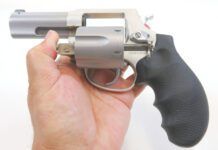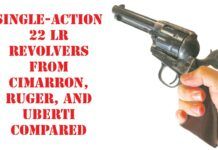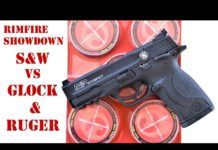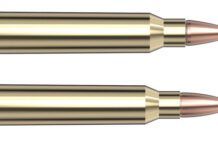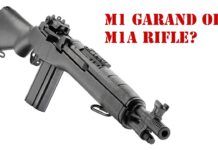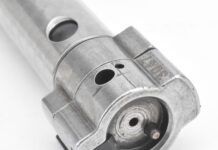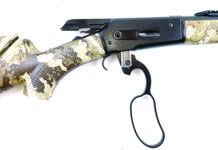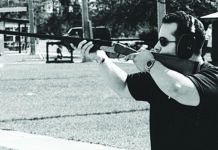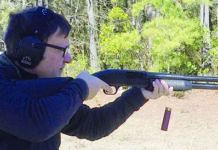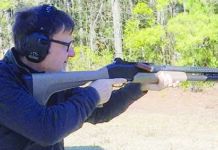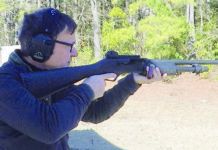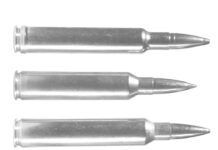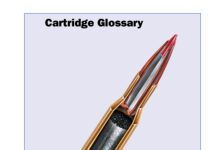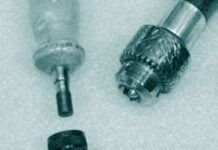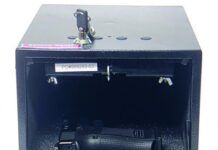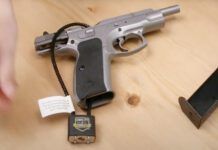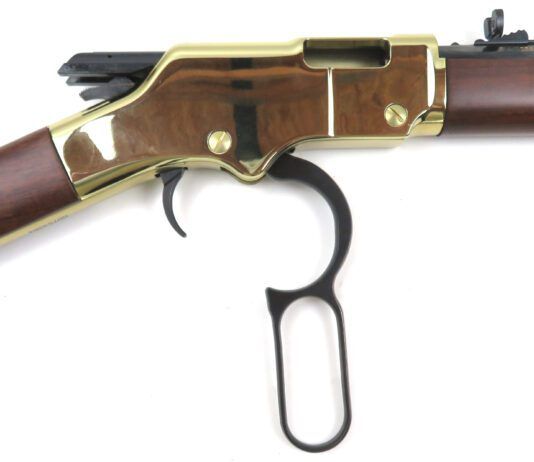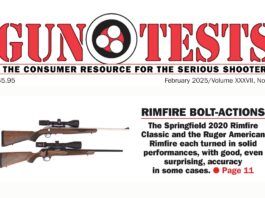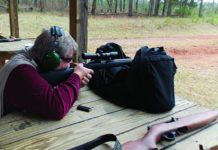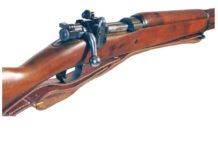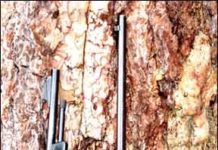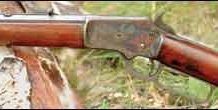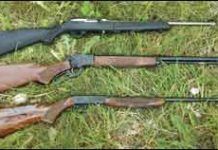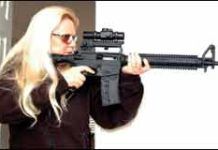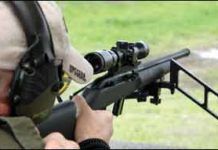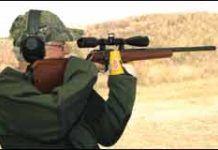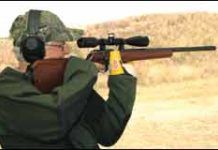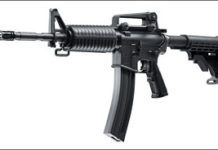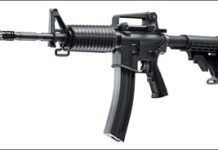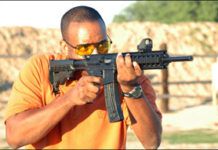Rimfire Field-Rifle Shoot-out: Marlin, Mossberg, and Ruger
In this installment, we test three rimfire rifles from three makers. The genre is the very popular and flexible field-gun description. The 22 LR rifle is an excellent trainer, a favorite recreational shooter, and a great small-game rifle. The rimfire is the one rifle every rifleman must have. The field gun is by definition, and the definition is liberal, a versatile go-anywhere get-anything shooter. Informal practice and small-game shooting are great pastimes. And while we are not focusing on personal defense, we should note that a good quality 22-caliber self-loader is a formidable firearm in skilled hands. Is a 22 LR a self-defense chambering we'd recommend? No. Have untold numbers of bad guys been deterred by being hit with a 22 LR round fired from a pistol or rifle? Yes. So reliability is important as well.
The rifle we are looking for should be light but not too light. It should be light enough for carrying for a day in the field, but it should have sufficient heft for good offhand shooting. While we carefully measure accuracy by firing from a solid bench rest, we also want a rifle that retains a good portion of its accuracy in offhand fire. Thus, a good balance of weight and a decent trigger action are desirable traits.
Historically, probably more 22 LR rifles have been set up as bolt actions, but because of their light recoil and shot-to-shot speed, self-loading rifles are the biggest sellers today. To keep prices in check, we selected a mix of readily available used and new firearms as well as optics for greater coverage of the best choices. As noted above, reliability is always important, but in this test, we allowed that if the firearm occasionally ties up and we lose a squirrel, we were more willing to give a gun a pass than if we were testing personal-defense firearms. It is almost a given that a 22 self-loading rifle malfunctions from time to time, and the fault is more often due to the construction of the 22 rimfire cartridge than any other single variable. We searched for ideal rifles and found some good picks. All had good points. Here's how they performed on a gun-by-gun basis.
We Take a Close Look at a Rare Springfield M2 22 LR Bolt Gun
The great Springfield Model of 1903 saw service in the first World War, and was upgraded along the way to many types and model variations. Around 1918 or ‘19 it was first made in 22 caliber, when Springfield brought out the predecessor to the Model 1922. That first effort apparently was not a great job. Then along came Julian Hatcher and some other designers, who modified the early efforts into what became known as the Model 1922 Springfield. This was a five-shot, magazine-fed 22 LR with a stock that did not have an upper hand guard. In 1937 the rifle was again redone and renamed the Springfield M2, 22LR. These were manufactured until 1942. If you're interested in adding a collectible to your armory that has plenty of history, but which can still shoot, here's what you need to know before you begin searching for one.
Historic Bolt-Action 22 Rifles: Remington Versus Winchester
For this test of vintage bolt-action 22 rifles, we had the loan of two old-timers, a Remington Nylon 12 and a Winchester Model 69A. We tested with three types of ammo, Wolf, CCI Velocitor, and Blazer, all in Long Rifle persuasion. Both rifles were supposed to handle Shorts and Longs too, so we also tried a few of them. Both rifles fed Long Rifles, Longs, Shorts and also CB caps perfectly. The Winchester's longer barrel made lots less noise with Shorts and especially the CB caps than the Remington. The report of CB's out of the long-barreled Winchester was just a click. Are these old rifles worth looking into? Let's see what we found.
Firelapping an Ancient Marlin
22 LR Takedowns: Browning, Ruger, Marlin Go Head to Head
We recently had the pleasure of testing one of the first copies of Ruger's just-announced new 10/22 Takedown, $389, and as is usual in this magazine, we wanted to test it against other takedown rifles. To that end we organized the simultaneous testing of the age-old but still in production semi-auto Browning SA-22, $700, and the even older lever-action design by Marlin, the 39A, $702. All of these rifles come apart easily for storage or transportation. Other than that feature, the rifles were miles apart in design and also in overall weight. However, considerations of not only weight but also shortness, ease of disassembly, and retained accuracy when reassembled, have major effects on the choices of one or the other of these for boat, off-road, or light-aircraft use. We kept that in mind as we examined each one. We tested with Federal AutoMatch, Eley Match EPS, CCI MiniMag solids, and Winchester Power Point HPs. Here's what we found.
Military Replica Rimfire Rifles: Mossberg, Citadel, and ISSC
One reason to produce rimfire replicas of military weapons is to help familiarize the shooter with how each gun operates at a fraction of the price of buying and feeding the corresponding centerfire model. If this isn't fun enough, then consider the history and the innovation that each rifle offers the shooter ahead of simpler rimfire designs. We last tested military-replica semiautomatic rimfire rifles in the February 2010 issue ("Tactical-Style 22 LR Carbines: Ruger, S&W, Legacy Duke It Out"), with the majority of the roster being taken up by the AR-15 design. In this test we will evaluate only one such rifle, Mossberg's $276 715T Tactical 22. Our second replica rifle represents a bygone era and the third a modern design. Our old-timer was the $399 Citadel M-1 22 Carbine made in Italy by Chiappa. The $609 German-made ISSC MK22 Desert Tan rifle with folding stock was a replica of the SCAR (Special Operations Forces Combat Assault Rifle). Both the MK22 and the M-1 Carbine are imported by Legacy Sports International of Reno, Nevada.
[IMGCAP(1)]
For accuracy tests, we fired from the 50-yard line with support from the Caldwell Tack Driver sandbag rest. Test ammunition was the same 40-grain assortment we used the April 2012 test of more traditional semi-automatic rifles. Two rounds featured copper-plated bullets. They were CCI's Mini Mag and CCI's AR Tactical 22 ammunition. We also fired Federal's Auto Match rounds, which launched a lead solid bullet. We also tried a variety of hollowpoint ammunition to assess versatility, but elected to fire shots of record with our roundnosed selections so we could compare results directly with our earlier tests.
Each one of our test guns arrived with open sights. In fact, the MK22/SCAR offered two aiming solutions in one set of fold-down sights. We wanted to know how well all of these sight packages worked. In addition, each rifle offered a way to mount a scope. We wanted to know how efficiently this option could be accomplished and its effect on accuracy. We began our accuracy tests using only the supplied open sights. Then, we mounted the same variable power 1-4X power scopes used in last month's rimfire rifle tests. Firing only the most accurate round per each gun, we then recorded additional 5-shot groups from the 50-yard bench. All three rifles fired at least 300 rounds over three days of testing with no more maintenance than an occasional spray of Rem Oil into the chamber and on the bolt. Let's see how they scored.
Semi-automatic Rifles: We Test CZ, Remington, Savage Rimfires
As centerfire-rifle ammunition prices jump up and down, many shooters get more interested in accurate rimfire rifles that shoot affordable, available 22 Long Rifle cartridges. We recently tested three semi-automatic rifles chambered for 22 LR that showed promise of being more than just plinkers: The $325 Savage Arms model 64 TR SR V Savage, CZ-USA's $465 model 512, and the $595 Remington 597 TVP. Each gun fired from a detachable magazine, but offered different profile stocks. The Savage resembled a precision rifle that might be used for tactical applications or benchrest competition. The Remington stock was a thumb-through design fully relieved to offer a full pistol grip to the shooter. The CZ offered the most traditional outline with a somewhat rectangular receiver mated to a fine wood stock. All three rifles came with scope mounts in place, and only the CZ rifle was equipped with sights.
To test for baseline accuracy we fired each rifle from the 50-yard line utilizing benchrest support. For optics, we chose low-power variable power scopes with circle-X reticles for rapid target acquisition. Test ammunition consisted of three high-velocity rounds topped with 40-grain bullets. Both our CCI Mini Mag and AR Tactical rounds were copper plated. Federal's new Auto Match fired a solid lead slug with a smooth gleaming finish.
What we found were three very good rifles. Each one deserved an A rating, in our view, with downgrades that may or may not apply, according to the individual. By the end of our range days, the only job left was to accurately describe each gun in print so that our readers could choose which rifle would best meet their needs or suits one's tastes.
Smallbore Accuracy Shootout: CZ, Browning, Anschtz Duel
Smallbore Accuracy Shootout: CZ, Browning, Anschtz Duel
Rim-Tac Rifles, Round II: The SIG 522 Edges Umarexs M4
In February 2010, we began evaluating tactical or military-style carbines chambered for the 22 LR round, and we continue to find new guns in what we call the "rim-tac" category. Previously, we looked at one AR-15 derivative, one tac-styled 10/22, and another carbine that more closely resembled a 1941 Russian machine gun. Our test guns were the Ruger SR-22R No. 1226 22 LR, $625; Smith & Wesson's M&P 15-22 No. 811030 22 LR, $569; and the Legacy Sports Puma Wildcat PPS2250S 22 LR, $550. In that test, we narrowly liked the Smith & Wesson M&P 15-22 the best, giving it an A grade compared to the Ruger's A- tally and the Wildcat's Bgrade.
Along the way, we had a heckuva lot of fun with the rifles without breaking the ammo bank. So, we gathered up two more rimfire samples from Umarex and Sig Sauer and wheelbarrowed bricks of 22 fodder to the range and had at it. Our test guns this round were the very different Colt M4 Carbine No. 2245050 22 LR, $576; and the Sig Sauer Sig522 Classic No. SIG522001 22 LR, $572.
The Colt has a complicated background. Carl Walther Germany entered into a licensing agreement with New Colt Holding Corporation, in which Carl Walther will produce these 22 rifles in Germany under the Colt brand. Umarex USA is responsible for importation, sales, marketing and service for the Colt tactical replicas.
Two tactical styles are being offered, each modeled after a Colt original—the M4 and M16 rifles—and both are available in two variations with 30-round 22 LR magazines along with a variety of accessories. The M4 version that we tested is a blowback semiauto with a barrel length of 16.2 inches (412 mm), overall length of 31.1 to 34.4 inches depending on the adjustable stock length, and iron sights, with the rear set into a detachable carry handle on a metal flat-top receiver.
Likewise, the Sig522 has lineage worth noting. According to Sig Sauer, the 522 has the "…look and feel of the Classic SIG556. Featuring SIG556 parts, including a Swiss-type folding stock and polymer forend on a durable metal receiver with integral Picatinny rail." We evaluated a 556 in the March 2010 issue, grading the 5.56mm rifle highly with an A-, but dinging it for its weight and cost.
Those aren't such factors with the 522, whose price tag is a few dollars below the M4 rimfire and whose weight is 6.4 pounds empty. Its overall length is 35.1 inches with the stock fully extended, 33.6 inches with the stock collapsed, and 26.1 inches with the stock folded.
Rim-Tac Rifles, Round II: The SIG 522 Edges Umarexs M4
In February 2010, we began evaluating tactical or military-style carbines chambered for the 22 LR round, and we continue to find new guns in what we call the "rim-tac" category. Previously, we looked at one AR-15 derivative, one tac-styled 10/22, and another carbine that more closely resembled a 1941 Russian machine gun. Our test guns were the Ruger SR-22R No. 1226 22 LR, $625; Smith & Wesson's M&P 15-22 No. 811030 22 LR, $569; and the Legacy Sports Puma Wildcat PPS2250S 22 LR, $550. In that test, we narrowly liked the Smith & Wesson M&P 15-22 the best, giving it an A grade compared to the Ruger's A- tally and the Wildcat's Bgrade.
Along the way, we had a heckuva lot of fun with the rifles without breaking the ammo bank. So, we gathered up two more rimfire samples from Umarex and Sig Sauer and wheelbarrowed bricks of 22 fodder to the range and had at it. Our test guns this round were the very different Colt M4 Carbine No. 2245050 22 LR, $576; and the Sig Sauer Sig522 Classic No. SIG522001 22 LR, $572.
The Colt has a complicated background. Carl Walther Germany entered into a licensing agreement with New Colt Holding Corporation, in which Carl Walther will produce these 22 rifles in Germany under the Colt brand. Umarex USA is responsible for importation, sales, marketing and service for the Colt tactical replicas.
Two tactical styles are being offered, each modeled after a Colt original—the M4 and M16 rifles—and both are available in two variations with 30-round 22 LR magazines along with a variety of accessories. The M4 version that we tested is a blowback semiauto with a barrel length of 16.2 inches (412 mm), overall length of 31.1 to 34.4 inches depending on the adjustable stock length, and iron sights, with the rear set into a detachable carry handle on a metal flat-top receiver.
Likewise, the Sig522 has lineage worth noting. According to Sig Sauer, the 522 has the "…look and feel of the Classic SIG556. Featuring SIG556 parts, including a Swiss-type folding stock and polymer forend on a durable metal receiver with integral Picatinny rail." We evaluated a 556 in the March 2010 issue, grading the 5.56mm rifle highly with an A-, but dinging it for its weight and cost.
Those aren't such factors with the 522, whose price tag is a few dollars below the M4 rimfire and whose weight is 6.4 pounds empty. Its overall length is 35.1 inches with the stock fully extended, 33.6 inches with the stock collapsed, and 26.1 inches with the stock folded.


